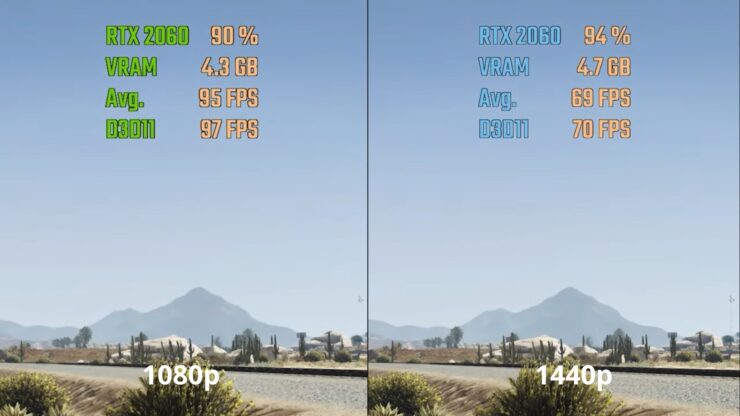What’s the difference between 1080p and 1440p

In the realm of visual entertainment, resolutions play a pivotal role in defining the quality of our viewing experience. As technology advances, resolutions have evolved from standard definition to high definition and beyond, offering increasingly immersive visuals. Among the array of resolutions available, 1080p (Full HD) and 1440p (Quad HD) stand out as two prominent standards, each with its own set of characteristics that shape how we perceive digital content. Delving into the intricacies of these resolutions unveils a world of difference, from pixel density to clarity and beyond.
Table of Contents
ToggleUnderstanding the Basics
Before delving into the disparities between 1080p and 1440p, it’s essential to grasp the fundamental concepts behind resolution. Resolution refers to the number of pixels that comprise an image displayed on a screen. The higher the resolution, the more pixels there are, resulting in sharper and more detailed visuals.
- 1080p (1920 x 1080): Also known as Full HD, 1080p boasts a resolution of 1920 pixels horizontally by 1080 pixels vertically. This resolution has long been a standard in the world of high-definition displays, offering crisp and clear imagery suitable for various applications, including gaming, multimedia, and general computing.
- 1440p (2560 x 1440): Commonly referred to as Quad HD or 2K, 1440p provides a significant upgrade in resolution compared to 1080p. With 2560 pixels horizontally by 1440 pixels vertically, this resolution offers enhanced clarity and detail, making it particularly popular among gamers, content creators, and professionals who demand high-fidelity visuals.
The Visual Divide
- Pixel Density: One of the most noticeable differences between 1080p and 1440p resolutions is pixel density. Due to its higher pixel count, 1440p displays pack more pixels into each inch of screen space compared to 1080p displays. This increased pixel density results in sharper images with finer details, making 1440p ideal for tasks that require precision and clarity, such as photo editing or graphic design.
- Clarity and Sharpness: While both resolutions offer high-definition visuals, the extra pixels of 1440p contribute to improved clarity and sharpness, especially noticeable on larger screens. Text appears crisper, edges are smoother, and fine details are more pronounced, enhancing the overall viewing experience whether you’re watching movies, playing games, or browsing the web.
- Gaming Performance: In the realm of gaming, resolution plays a crucial role in determining visual fidelity and gameplay experience. While 1080p remains the standard for many gamers due to its widespread support and compatibility, 1440p offers a noticeable upgrade in visual quality. Games rendered in 1440p exhibit finer textures, more detailed environments, and smoother edges, immersing players in vibrant and lifelike worlds.
- Multitasking and Productivity: For productivity-focused tasks such as multitasking, content creation, and programming, the additional screen real estate provided by a 1440p display can significantly enhance workflow efficiency. With more pixels available, users can comfortably work with multiple windows, applications, or documents simultaneously without sacrificing clarity or legibility.
Considerations and Compatibility
While 1440p offers undeniable advantages in terms of visual fidelity, there are several factors to consider before making the leap from 1080p:
- Hardware Requirements: Achieving optimal performance at 1440p may necessitate more powerful hardware, including graphics cards, processors, and sufficient RAM. Gamers and content creators should ensure that their systems can handle the increased demands of higher resolutions before upgrading.
- Cost: As with any technology upgrade, transitioning to a 1440p display may entail higher costs compared to sticking with 1080p. From the initial investment in a compatible monitor to potential upgrades for supporting hardware, individuals must weigh the benefits against the associated expenses.
- Content Availability: While 1440p content is becoming more prevalent across various platforms, it may not be as ubiquitous as 1080p content, particularly in streaming services and online media. Users should consider the availability of compatible content when deciding whether to adopt a 1440p display.
Conclusion
In the eternal quest for visual perfection, the choice between 1080p and 1440p resolutions represents a significant decision for consumers, gamers, and professionals alike. While 1080p continues to serve as a reliable standard for high-definition displays, 1440p offers a compelling upgrade in terms of clarity, detail, and immersion. Whether you’re gaming, creating content, or simply enjoying multimedia entertainment, the distinctions between these resolutions are unmistakable, shaping the way we perceive and interact with digital content in the modern age.


